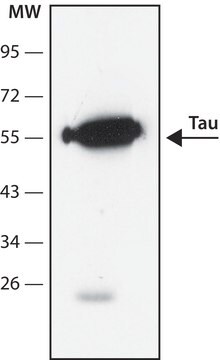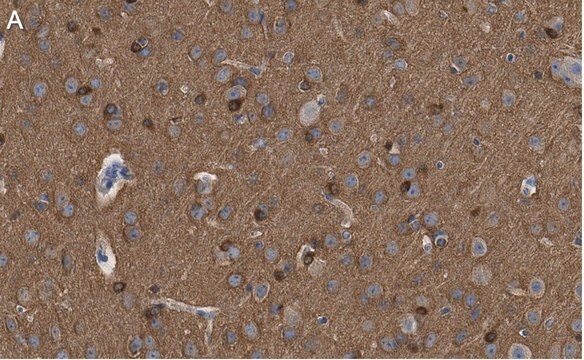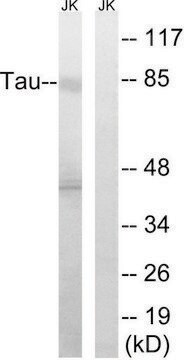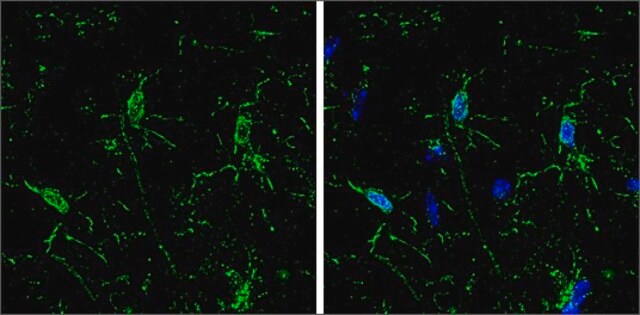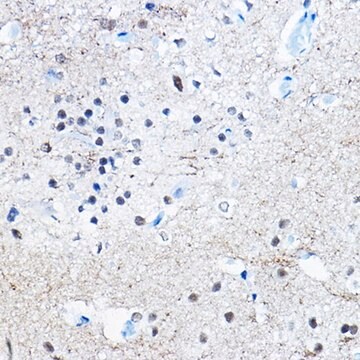MABN819
Anti-Tau Antibody, oligomeric Antibody, clone TOMA-1
clone TOMA-1, from mouse
Sinónimos:
Microtubule-associated protein tau oligomer, Tau oligomer, PHF-tau oligomer, Paired helical filament-tau oligomer, Neurofibrillary tangle protein oligomer
About This Item
Productos recomendados
biological source
mouse
Quality Level
antibody form
purified immunoglobulin
antibody product type
primary antibodies
clone
TOMA-1, monoclonal
species reactivity
rat, human, mouse
species reactivity (predicted by homology)
mammals (based on high homology)
technique(s)
ELISA: suitable
dot blot: suitable
immunofluorescence: suitable
immunohistochemistry: suitable
neutralization: suitable
western blot: suitable
isotype
IgG2aκ
NCBI accession no.
UniProt accession no.
shipped in
ambient
target post-translational modification
unmodified
Gene Information
human ... MAPT(4137)
mouse ... Mapt(17762)
rat ... Mapt(29477)
General description
Specificity
Immunogen
Application
Neuroscience
Please refer to the following publications regarding the use of TOMA clones in Dot Blot, ELISA, Immunofluorescence, Immunohistochemistry, Neutralization, and Western Blotting applications:
1. Vuono, R., et al. (2015). Brain. 138(Pt 7):1907-1918.
2. Castillo-Carranza, D.L., et al. (2015). J. Neurosci. 35(12):4857-4868.
3. Castillo-Carranza, D.L., et al. (2014). J. Neurosci. 34(12):4260-4272.
Quality
Western Blotting Analysis: 4 µg/mL of this antibody detected Tau oligmers in 25 µg of Alzheimer′s diseased human brain lysate.
Target description
Physical form
Storage and Stability
Other Notes
Disclaimer
¿No encuentra el producto adecuado?
Pruebe nuestro Herramienta de selección de productos.
Storage Class
12 - Non Combustible Liquids
wgk_germany
WGK 2
flash_point_f
Not applicable
flash_point_c
Not applicable
Certificados de análisis (COA)
Busque Certificados de análisis (COA) introduciendo el número de lote del producto. Los números de lote se encuentran en la etiqueta del producto después de las palabras «Lot» o «Batch»
¿Ya tiene este producto?
Encuentre la documentación para los productos que ha comprado recientemente en la Biblioteca de documentos.
Nuestro equipo de científicos tiene experiencia en todas las áreas de investigación: Ciencias de la vida, Ciencia de los materiales, Síntesis química, Cromatografía, Analítica y muchas otras.
Póngase en contacto con el Servicio técnico

